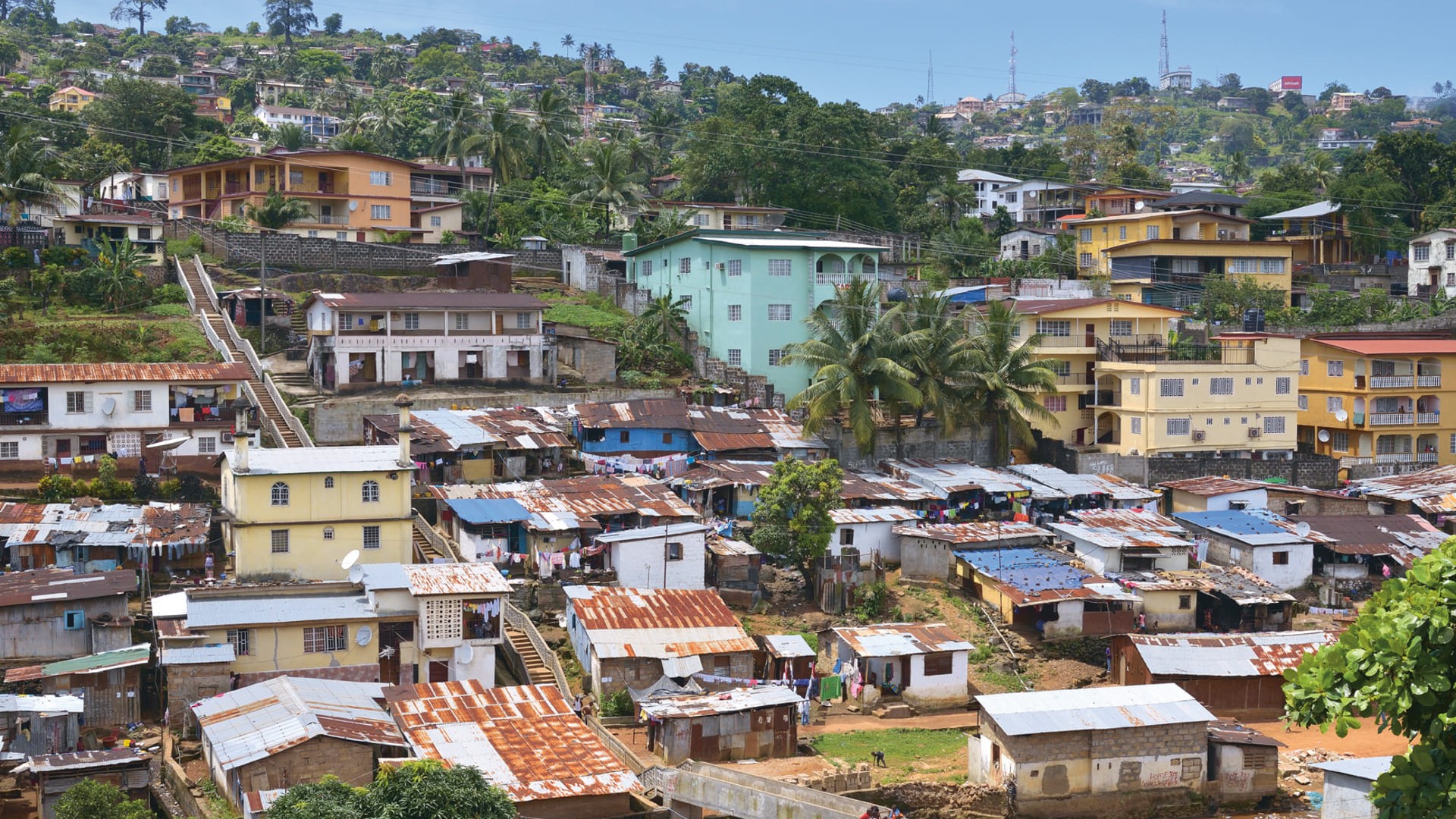Health and wellbeing in African cities
Adequate shelter, which functions as needed for the climate and other conditions it is built in, is a basic factor for general health and wellbeing. In the tropical climate of sub-Saharan Africa, traditional construction design is being challenged by the introduction of foreign-style glazed buildings.

Traditional building techniques in tropical regions
Buildings in tropical regions have traditionally been designed to provide protection against local climatic extremes. At the same time, they reflect an area’s artistic and practical utilisation of locally available materials, such as mud, stone, thatch, bamboo, palm fronds and wood saplings. These building materials have inherent properties that are beneficial to health and wellbeing. Bamboo, for example, tolerates drought and its adaptive beauty and strength meet sheltering requirements for rich and poor alike.
Introduction of foreign-style buildings
Given the successful nature of traditional constructions, there would not appear to be a need for glazed, foreign-style buildings in warm-humid and hot-dry tropical climates, such as in Benin, Cameroon, Ghana, Ivory Coast and Togo. Despite this, changing tastes and social aspirations are driving demand for these imported building types, in preference over the traditional, leading to a so-called “schizophrenic architecture of confusion”.

However, aesthetics are not the only problem. Local builders do not necessarily understand how to work with the materials and construction techniques used in these buildings. This leads to defective quality, with structures becoming susceptible to inclement weather conditions, rodents and termite infestations, as well as contagious diseases. Particularly in the case of healthcare facilities and schools, the quality of buildings have an impact on the health and wellbeing of those using them, especially children.
Developing building practices policy, supported by science and technology
To avoid a situation where new building practices result in more harm than good to health in tropical climates, African governments and their various sectors must develop policies and regulations to synchronize legislation for all agencies responsible for building practices. In West African countries, a concerted effort underpinned by science and technology is needed to build on traditional legacies. This will enhance sustainable communities that meet the aspirations of African people and ensure their health.
Creating healthy and sustainable places in the future
Current world events, and their impact on the built environment, are making it abundantly clear that creating the healthy and sustainable places aimed for by 2030 mean moving beyond “common sense” to “phronesis partnership”. People really matter.
Industrial sectors
- Manufacturing
- Electricity, gas, steam and air conditioning supply
- Water supply; sewerage, waste management and remediation activities
- Construction
- Transportation and storage
- Information and communication
- Financial and insurance activities
- Real estate activities
- Professional, scientific and technical activities
- Education
- Human health and social work activities
- Activities of extraterritorial organizations and bodies
Habitat at the New European Bauhaus Festival and the STI Forum
This story is part of “Habitat: Embracing change in the post-2030 future”. Habitat was discussed at the side event “New habitats for the post-2030 future” during the New European Bauhaus Festival on 10 June 2022. At the STI Forum of 2023, a science policy brief recommendation on Habitat was published under the category “science-policy-society interface”: Enablers for transformative change to sustain people and nature-centred world. Download recommendation >
Contribution to story
- This is “HABITAT: Embracing Change in the Post 2030 Future” Exhibition designed and curated by Dr Sandra Piesik, 3 ideas B.V in collaboration with HABITAT Coalition and VITO
- Copy editing by Katleen Vandormael, Communication Manager G-STIC, VITO
- Cover image: Busy beach with fishing boats and people below Cape Coast Castle near Elmina, Ghana © Wolfgang Kaehler, Alamy Stock Photo
- “HABITAT: Vernacular Architecture for a Changing Planet” published by Thames & Hudson
- “HABITAT: Vernacular Architecture for a Changing Planet” published by Abrams
- “Habitat: Traditionelle Bauweisen für den globalen Wandel” published by DETAIL Special
- “Habiter la planète: Atlas mondial de l'architecture vernaculaire” published by Flammarion First Prize Winner at “J’aime le livre d’art”, Paris 2017
- “HABITAT: Arquitectura vernácula para un planeta cambiante” published by Blume
- “HABITAT: Vernacular Architecture for a Changing Climate’ published by Thames & Hudson UK, USA, and Shufuhsa
